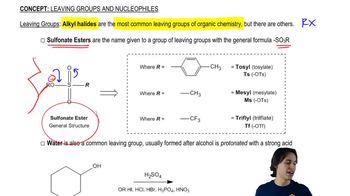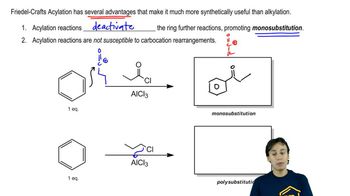Draw a perspective structure or a Fischer projection for the products of the following SN2 reactions.
(e)
 Verified step by step guidance
Verified step by step guidance Verified video answer for a similar problem:
Verified video answer for a similar problem:



 8:33m
8:33mMaster Drawing the SN2 Mechanism with a bite sized video explanation from Johnny
Start learning